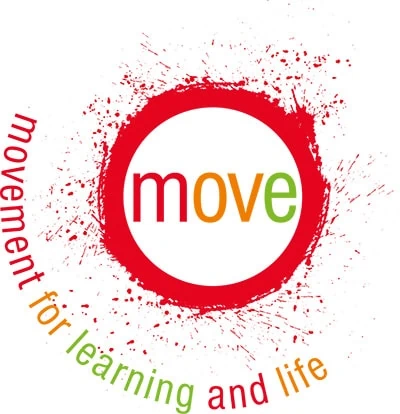INTERVENTIONS AT WEST LANCASHIRE COMMUNITY HIGH SCHOOL
At West Lancashire Community High School, we provide additional opportunities to personally develop through a range of interventions that link to the key areas of the Education, Health and Care Plan (EHCP). Our staff team deliver a range of interventions that support the development of cognition/learning, communication/interaction, social/emotional/mental health and physical/sensory skills and also work towards achieving outcomes set within the EHC Plan.
Each Friday morning our students attend their allocated intervention programme. They access this intervention for the whole academic year to complete the programme.
Some of our interventions are built into the curriculum and happen as and when students need or across the lessons they engage with each day.
Below are the individual overviews for all of the interventions that are currently offered at West Lancashire Community High School.
AUTISM AND ME
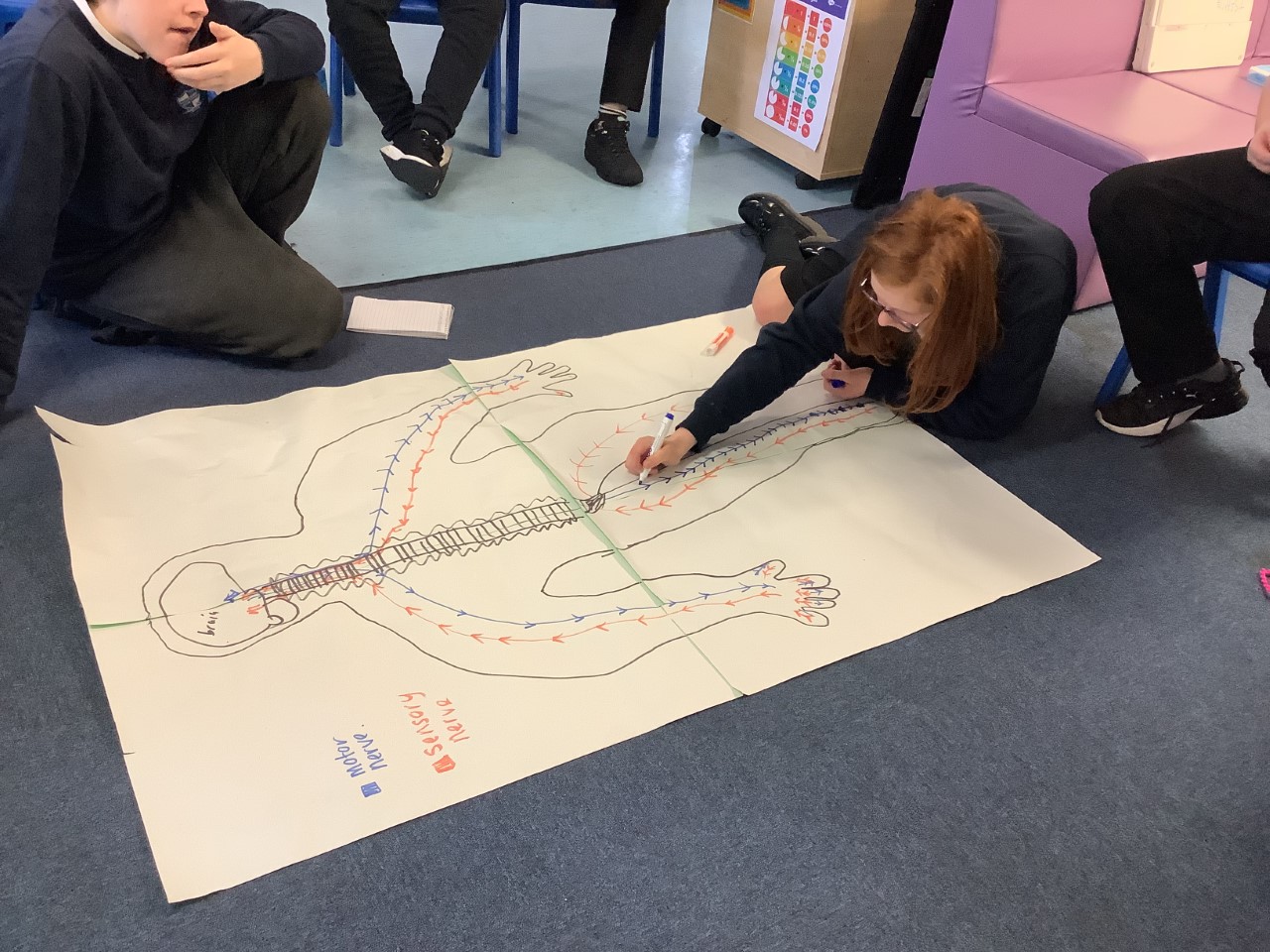
|
NAME OF INTERVENTION |
||||
|
Autism and Me |
||||
|
AREA OF FOCUS (PLEASE HIGHLIGHT) |
||||
|
COGNITION AND LEARNING |
COMMUNICATION AND INTERACTION |
SOCIAL, EMOTIONAL AND MENTAL HEALTH |
PHYSICAL AND SENSORY |
SELF-HELP AND INDEPENDENCE |
|
INTENT |
||||
|
The aim of Autism and Me is;
Autism and Me is an intervention course for students who have an ASC diagnosis either longstanding or new. The sessions involve group discussions, activities and individual tasks. Over the course we encourage our students to recognise their uniqueness and take ownership of it by developing their own understanding of how they process and see the world around them. The course of work is drawn from the text and research of Peter Vermeulen in ‘I am Special’ (2013) Jessica Kingsley Publishers, London. |
||||
|
IMPLEMENTATION |
||||
|
Students engage in weekly sessions and complete a programme of study that explores;
The intervention is supported by a lead who is also leading on NAS (National Autistic Society) Accreditation and teaching assistants to support the delivery of the curriculum. Resources are designed appropriately and are drawn from the text ‘I am Special’ (2013) by Peter Vermeulen. |
||||
|
IMPACT |
||||
|
Students will be able to communicate facts about their autism and their uniqueness. Students will be able to communicate about how their autism impacts them and how they can overcome the barriers. Students take ownership of their autism and overcome the challenges and barriers to engage positively with the world around them both in school and in the wider community. Students complete weekly reflections and end of term reflections. Completed portfolio of evidence produced by students. Progress of students with specific PLG (Personal Learning Goals) outcomes are monitored on Evidence for Learning. Future Development – All student progress in ‘Autism and Me’ will be tracked and recorded on Evidence for Learning and bespoke reports produced to communicate impact. |
||||
Attention Autism
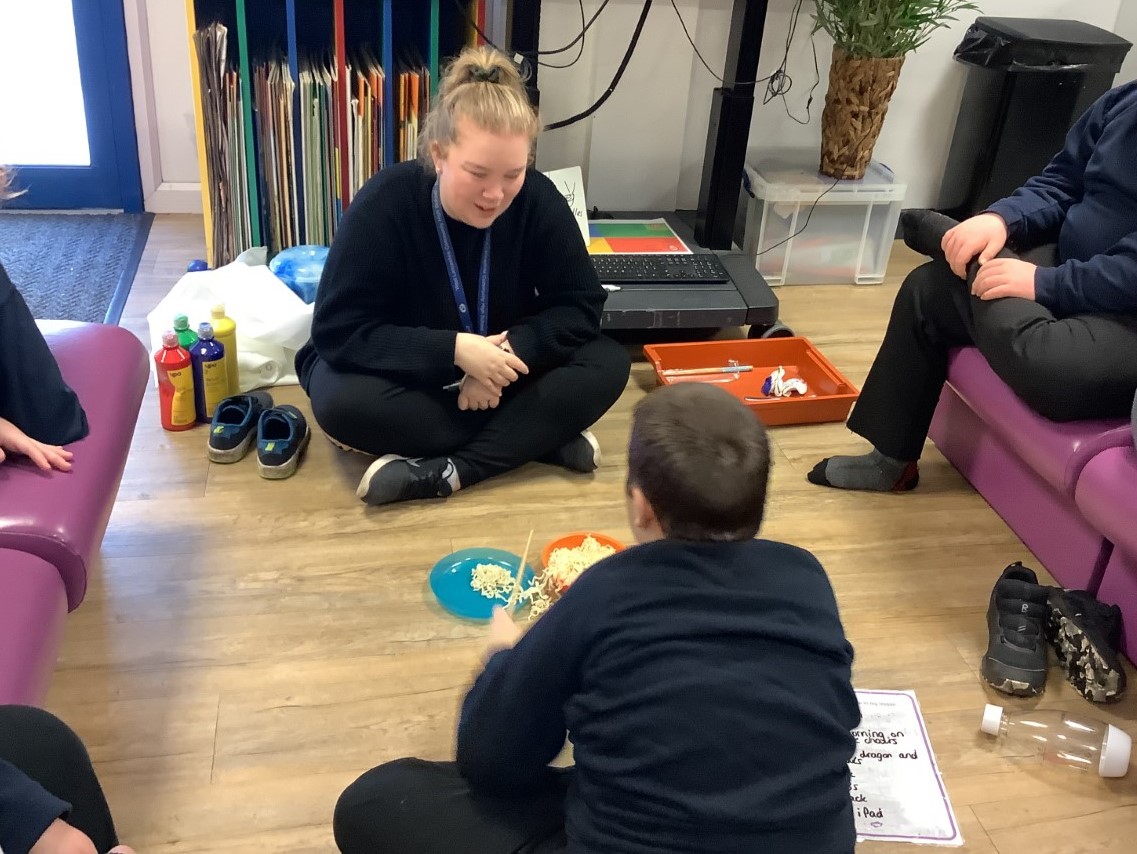
|
NAME OF INTERVENTION |
||||
|
Attention Autism |
||||
|
AREA OF FOCUS (PLEASE HIGHLIGHT) |
||||
|
COGNITION AND LEARNING |
COMMUNICATION AND INTERACTION |
SOCIAL, EMOTIONAL AND MENTAL HEALTH |
PHYSICAL AND SENSORY |
SELF-HELP AND INDEPENDENCE |
|
INTENT |
||||
|
The Attention Autism programme is an intervention model devised by Speech and Language Therapist, Gina Davies. The programme is aimed towards students who respond best to visual stimuli rather than auditory. The intervention aims to:
|
||||
|
IMPLEMENTATION |
||||
Stages of Attention Autism Stage 1: The Bucket to focus attention An opaque bucket with a lid is filled with visually engaging toys and objects, aiming to gain the shared attention of the group. The adult leader shows each item to the group and uses simple repetitive vocabulary to comment on the various objects. Stage 2: The Attention Builder Visually stimulating activities are shown to the group by the adult leader, aiming to sustain attention for a longer period. The activities are fun, visually engaging and can often involve delightful mess! Stage 3: Turn-taking and re-engaging attention The adult leader demonstrates a simple activity, often modelled with another adult in the group. Some children are then invited to have a turn but only if they are comfortable to do so. Not every child in the group will get a turn, which then teaches important emotional regulation skills, as well as the essential skills of waiting, turn-taking and learning through modelling. Stage 4: Shifting and re-engaging attention Stage 4 aims to develop the skill of engaging and shifting attention. The adult leader demonstrates a simple creative task, and then gives each child an individual kit to copy the task. The children take their kits to a table, complete the task independently, and then everyone returns to the group to show their completed tasks. More complex skills can be introduced as confidence and social skills develop e.g. sharing materials, working with a partner, problem solving. Attention Autism principles can then be generalised to curriculum activities (e.g. literacy and numeracy) to facilitate learning and skill development. |
||||
|
IMPACT |
||||
|
Attention Autism results in students being able to develop the ability to:
|
||||
Art and Design
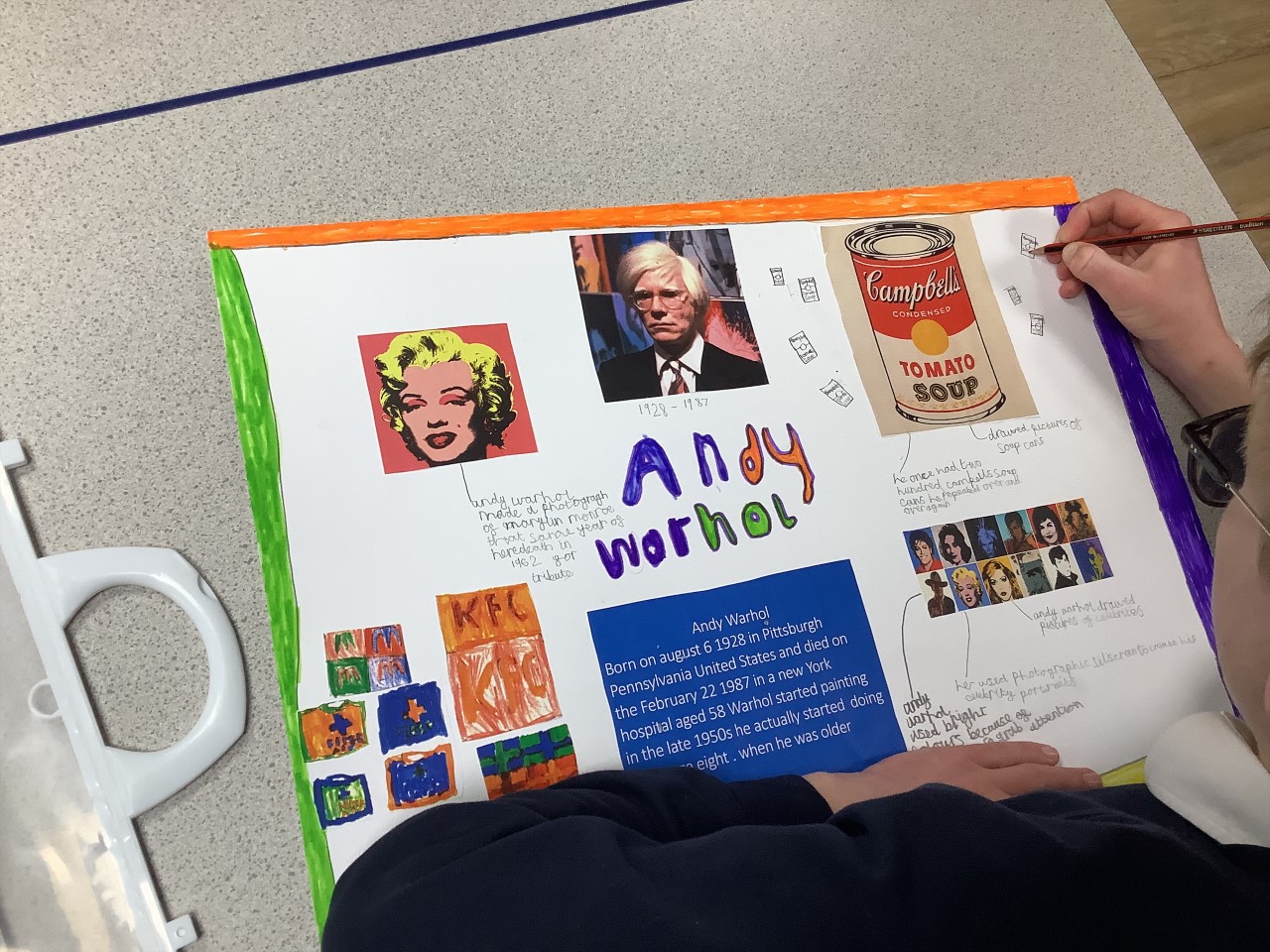
|
NAME OF INTERVENTION |
||||
|
Art & Design |
||||
|
AREA OF FOCUS (PLEASE HIGHLIGHT) |
||||
|
COGNITION AND LEARNING |
COMMUNICATION AND INTERACTION |
SOCIAL, EMOTIONAL AND MENTAL HEALTH |
PHYSICAL AND SENSORY |
SELF-HELP AND INDEPENDENCE |
|
INTENT |
||||
|
The focus of the intervention is to develop skills and techniques within the 7 elements of art. This is done over a two-year period to help develop self confidence in individual abilities with the aim of this transferring into the art sessions and projects chosen as part of KS4 ‘options’. Students will develop skills to strengthen their art knowledge through the development of art vocabulary, study artists and applying this to their own pieces of work The intent is to upskill to improve art outcomes at GCSE for those who are entered. |
||||
|
IMPLEMENTATION |
||||
|
Weekly sessions which cover all the elements if art. Students are provided with an interventions sketch book which compliments the work that they already do in class. Students are provided teacher demonstration time and 1:1 support to help develop skills and techniques. Students watch tutorials and can further experiment with mediums and materials. Students can research artists of choice and work in a themed area and medium that they prefer, further strengthen skills and students becoming more aware of their own individual style. Students develop self-reflection skills. Student also develop knowledge organiser linked to GCSE Art to help prepare for further studies. |
||||
|
IMPACT |
||||
|
Developing confidence in the use of mediums Developing confidence in recognising the elements of art and using these appropriately in individual pieces of work. Developing a greater awareness of AO1 – AO4 linked to the GCSE art assessment outcomes. Developing skills in critically analysing their own work and the work of others Overall – sustained learning at GCSE level |
||||
Fine Motor Skills
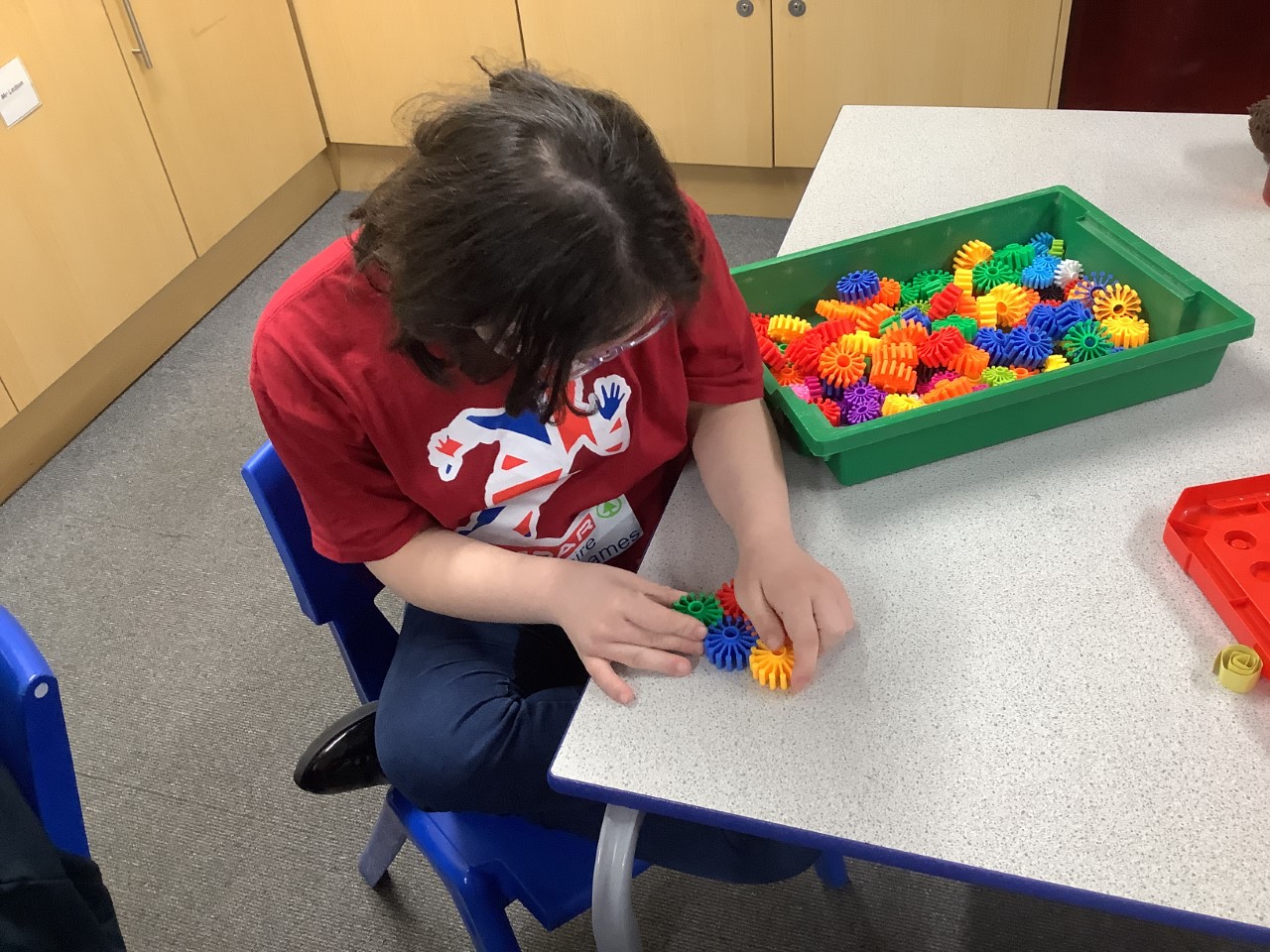
|
NAME OF INTERVENTION |
||||
|
Fine Motor Skills |
||||
|
AREA OF FOCUS (PLEASE HIGHLIGHT) |
||||
|
COGNITION AND LEARNING |
COMMUNICATION AND INTERACTION |
SOCIAL, EMOTIONAL AND MENTAL HEALTH |
PHYSICAL AND SENSORY |
SELF-HELP AND INDEPENDENCE |
|
INTENT |
||||
|
To develop fine-motor skill abilities for identified students to improve functional access to daily tasks. To apply Occupational Therapy principles to activities to ensure there is a research-based approach to tasks. |
||||
|
IMPLEMENTATION |
||||
|
Students will access a small group intervention each week. Student will develop.
Students will access a range of functional and practical activities that develop the above skills and also a range of functional activities that can be applied in the wider world. |
||||
|
IMPACT |
||||
|
Students develop their functional motor skills and apply these to everyday activities such as tying shoelaces or fastening buttons. Improvements to pencil grip and letter formation. Increased independence in functional and practical tasks both in school and in the wider community. |
||||
Workshop Skills
|
NAME OF INTERVENTION |
||||
|
Workshop Skills |
||||
|
AREA OF FOCUS (PLEASE HIGHLIGHT) |
||||
|
COGNITION AND LEARNING |
COMMUNICATION AND INTERACTION |
SOCIAL, EMOTIONAL AND MENTAL HEALTH |
PHYSICAL AND SENSORY |
SELF-HELP AND INDEPENDENCE |
|
INTENT |
||||
|
The focus for students in this intervention is to undertake work-based activities in a workshop setting and apply communication skills effectively by working within a small team. Students will also develop their fine-motor skills through a range of tasks to focus on manipulation of materials and tools. All combined the intention is to develop their independence skills and to be able to make safe decisions in a workshop environment. |
||||
|
IMPLEMENTATION |
||||
|
Students will access a weekly intervention with a workshop focus and medium-term project. Students will work with staff with good pedagogical knowledge to deliver the required skills. Through adapted approaches, students will access design and make activities both in the workshop and in the kitchen. Students will build and apply skills each week and work towards an end product whilst applying communication skills and fine-motor skills during the activities. |
||||
|
IMPACT |
||||
|
Students communicate effectively with a team experience and demonstrate effective speaking and listening skills. Students develop their fine-motor skills to be able to manipulate materials and coordinate the use of equipment and tools safely. Students will develop their independence and self-help skills to prepare them for potential working life beyond West Lancs. |
||||
The Zones of Regulation
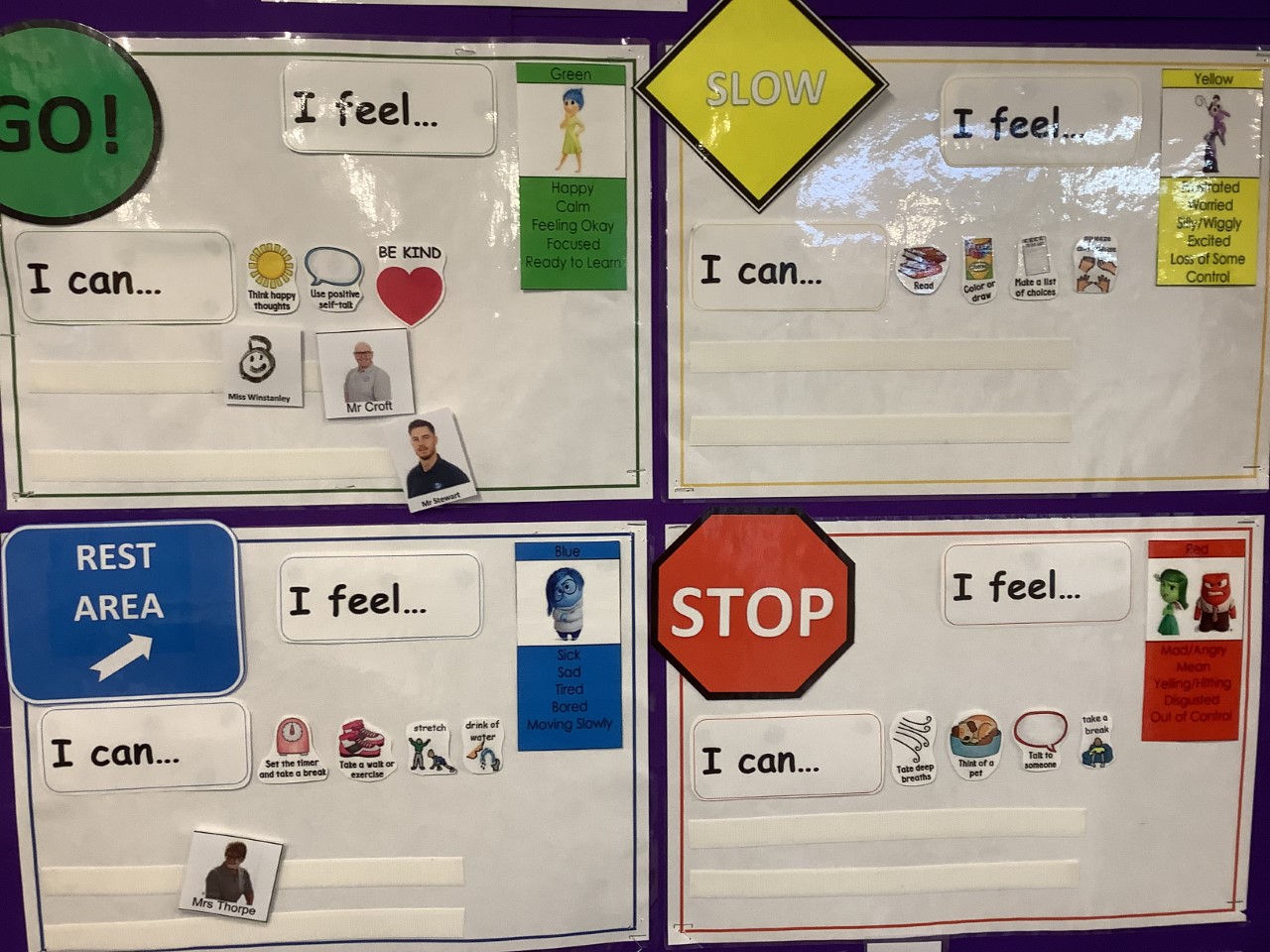
|
NAME OF INTERVENTION |
||||
|
Zone of Regulation (Leah M. Kuypers, MA Ed. OTR/L) 2011 |
||||
|
AREA OF FOCUS (PLEASE HIGHLIGHT) |
||||
|
COGNITION AND LEARNING |
COMMUNICATION AND INTERACTION |
SOCIAL, EMOTIONAL AND MENTAL HEALTH |
PHYSICAL AND SENSORY |
SELF-HELP AND INDEPENDENCE |
|
INTENT |
||||
|
To create a school wide ethos to support the development of emotional literacy and self-regulation across the school day. To give students access to a robust emotional language based approach to increase their understanding of themselves. To develop resilience in students to be able to recognise their own feelings and the best ways to manage them. |
||||
|
IMPLEMENTATION |
||||
|
All classrooms have a Check-In system based on the Zones of Regulations™. Zones of Regulation is a formal part of morning and afternoon routine with students identifying how they are feeling on the scale and if appropriate stating why. Staff will model daily by talking about the zones and linking to their own experiences to break down barriers. Students are encouraged to engage with the Zones of Regulation throughout the day. The Zones of Regulation can be personalised for individual students. These can be presented in different ways depending on their social understanding and awareness. Personalised zones should be completed by the individuals alongside staff. This is the first step in self-management. Emotion-based vocabulary is used across the school day and reflected on when needed to support the students in real-time. School Occupational Therapist will support class teams with regulatory activities including sensory circuits (calming, alerting or organising). |
||||
|
IMPACT |
||||
|
Observations and logs of dysregulation are used to track and measure the impact of this intervention. Logs on CPOMS to build a chronology of incidents with emphasis on responses to challenging situations. Record impact on Student Support Plans. |
||||
Lego Therapy
(Daniel B. LeGoff, Georgina Gomez De La Cuesta, GW Krauss and Simon Baron-Cohen - 2014)
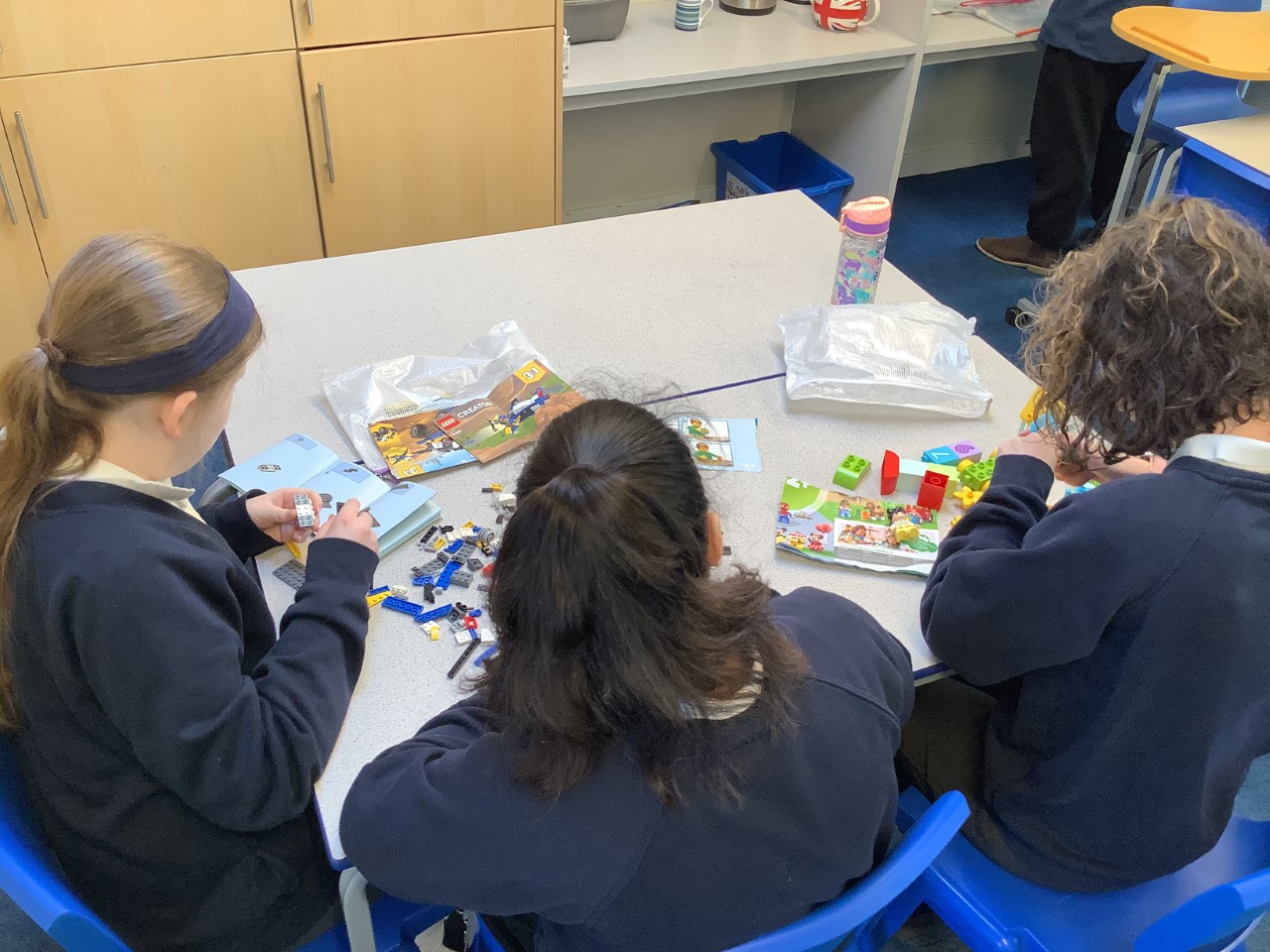
|
NAME OF INTERVENTION |
||||
|
Lego Therapy (Daniel B. LeGoff, Georgina Gomez De La Cuesta, GW Krauss and Simon Baron-Cohen - 2014) |
||||
|
AREA OF FOCUS (PLEASE HIGHLIGHT) |
||||
|
COGNITION AND LEARNING |
COMMUNICATION AND INTERACTION |
SOCIAL, EMOTIONAL AND MENTAL HEALTH |
PHYSICAL AND SENSORY |
SELF-HELP AND INDEPENDENCE |
|
INTENT |
||||
|
Lego-based therapy (LeGoff et al 2014) is an evidence based approach that aims to develop social communication skills in autistic children or those who require further social communication support, such as sharing, turn-taking, following rules, using detailed language and problem-solving within groups. Through the 3 tier programme we aim to provide pupils with the key skills that enable them to access the wider world and reach individual potential. |
||||
|
IMPLEMENTATION |
||||
|
The program is split into 3 stages which increase in complexity.
|
||||
|
IMPACT |
||||
|
The skills developed within Lego Therapy sessions are transferrable across all areas of the academic and social curriculum.
Impact for each pupil is monitored and recorded through reflection diaries, observations and PLG outcomes. |
||||
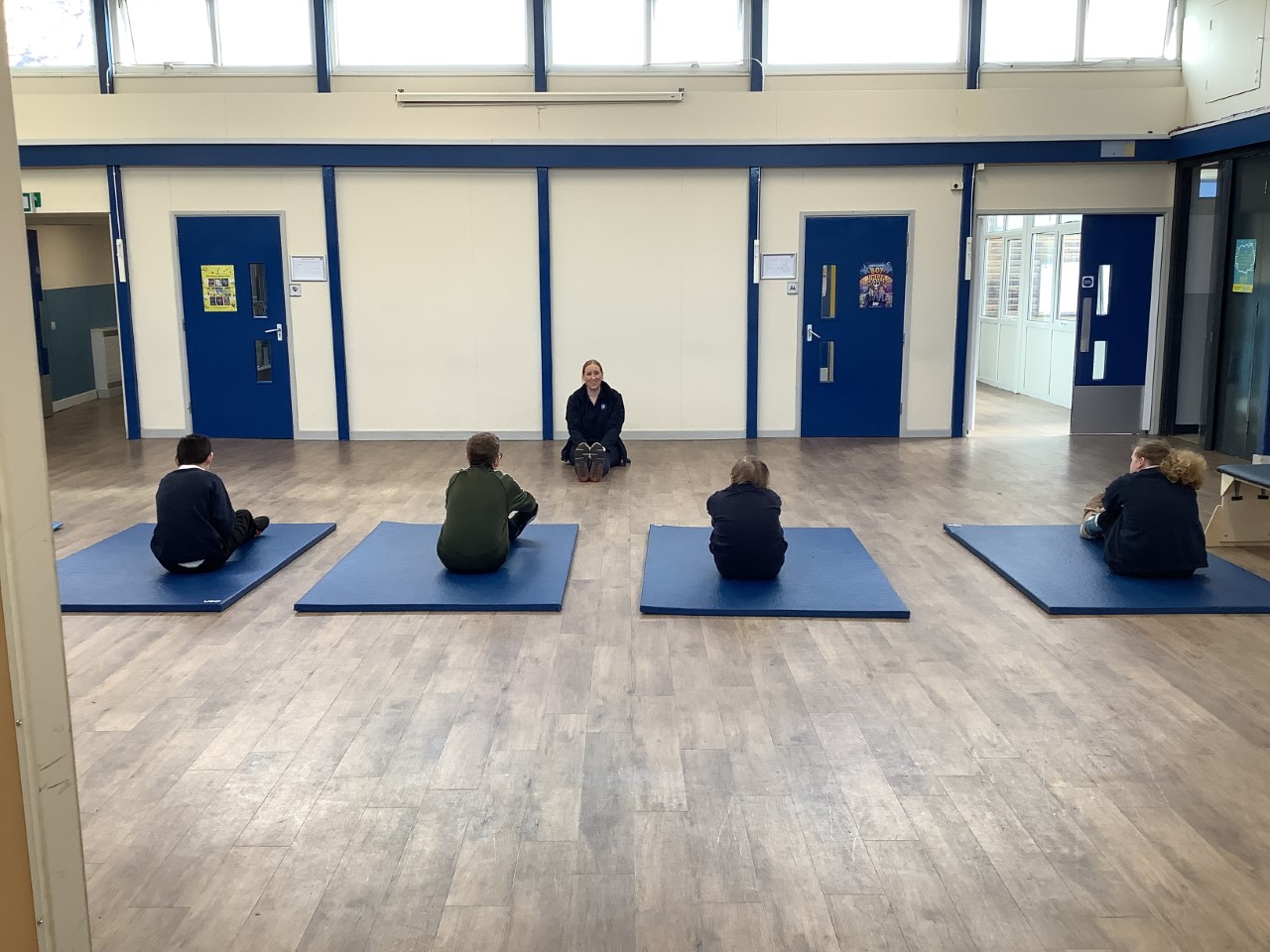
|
NAME OF INTERVENTION |
||||
|
MOVE Programme |
||||
|
AREA OF FOCUS (PLEASE HIGHLIGHT) |
||||
|
COGNITION AND LEARNING |
COMMUNICATION AND INTERACTION |
SOCIAL, EMOTIONAL AND MENTAL HEALTH |
PHYSICAL AND SENSORY |
SELF-HELP AND INDEPENDENCE |
|
INTENT |
||||
|
The Move programme sets long term, achievable goals with pupils and their families which aim towards developing physical skills and increasing independence. The long-term goals are then broken down into smaller steps which can be integrated into everyday life to practice the skills required to eventually reach the long-term goal. The programme is suitable for anybody who has not yet learnt to sit, stand, or walk confidently or those who are maintaining or regaining existing skills. By increasing movement, we can increase communication, inclusion, self-help skills and confidence enabling students to reach their full potential.
Each pupil on the MOVE programme will have an initial meeting with their family, the Move senior practitioner in school, physiotherapists, and occupational therapists where relevant and the class staff. This enables us to ensure targets are a priority to everyone involved and will have the maximum impact. Key skills will then be identified and shared with all involved and updated as required until we meet the long-term goals. |
||||
|
IMPLEMENTATION |
||||
|
Three long term goals are selected by pupils, the family and school. These are then broken down into achievable targets using the MOVE manual to support. MOVE programmes will then be produced and opportunities throughout the school day where these can be practiced will be identified. MOVE is incorporated into daily life within school rather than being delivered discretely.
Pupils progress will be monitored by a senior practitioner within school at least termly, but this will depend on individuals. Staff delivering programmes will keep the practitioner updated with progress, so targets are constantly challenging yet achievable. The MOVE programme is produced by Enham trust. www.themovepartnership.org.uk |
||||
|
IMPACT |
||||
|
Each pupil has their own assessment profile and mobility passport which is a record of their targets and progress throughout the programme. Targets will be updated as pupils make small steps which will be recorded to show progress across their time on the programme. |
||||
MAPT (Motor Activity Training Programme)
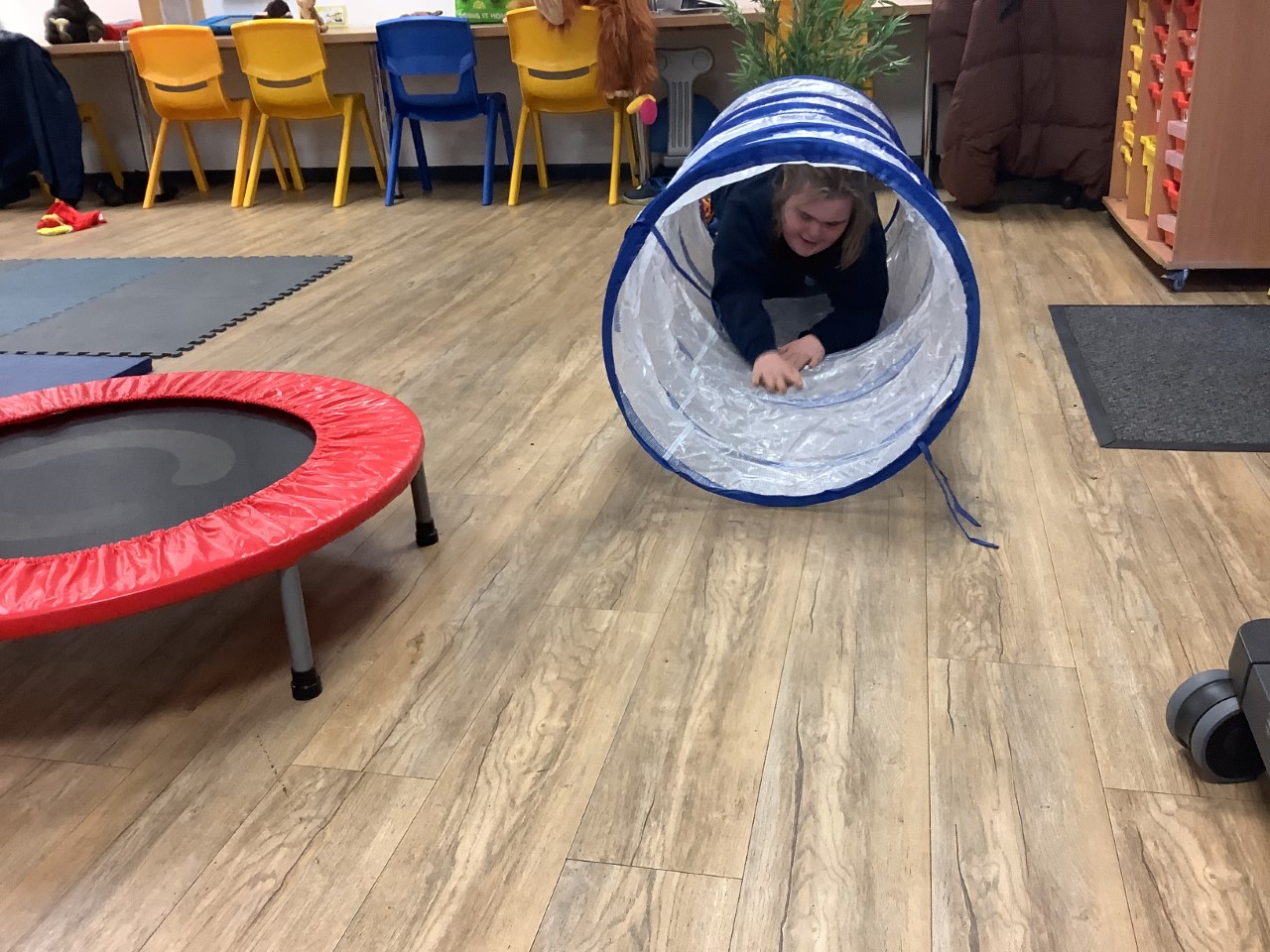
|
NAME OF INTERVENTION |
||||
|
Motor Activity Training Programme |
||||
|
AREA OF FOCUS (PLEASE HIGHLIGHT) |
||||
|
COGNITION AND LEARNING |
COMMUNICATION AND INTERACTION |
SOCIAL, EMOTIONAL AND MENTAL HEALTH |
PHYSICAL AND SENSORY |
SELF-HELP AND INDEPENDENCE |
|
INTENT |
||||
|
The Motor Activity Training Programme is part of the Special Olympics and is designed for students who are unable to participate in official sports competitions due to their functional abilities. It is designed to prepare out students, including those with severe or profound disabilities and significant physical disabilities, for sport-specific activities appropriate for their ability and need. Key skills students will develop are:
|
||||
|
IMPLEMENTATION |
||||
|
The Programme is usually done over 6-10 weeks, ending in a Challenge Event where staff, parents, governors, and students come together to celebrate everyone's achievements throughout recent participation in the programme. Programme Structure:
|
||||
|
IMPACT |
||||
|
Students who access the Motor Activity Training Programme develop:
|
||||
SULP (Social Use of Language Programme) Wendy Rinaldi
|
NAME OF INTERVENTION |
||||
|
SULP (Social Use of Language) |
||||
|
AREA OF FOCUS (PLEASE HIGHLIGHT) |
||||
|
COGNITION AND LEARNING |
COMMUNICATION AND INTERACTION
|
SOCIAL, EMOTIONAL AND MENTAL HEALTH |
PHYSICAL AND SENSORY |
SELF-HELP AND INDEPENDENCE |
|
INTENT |
||||
|
Social Use of Language Programme by Dr. Wendy Rinaldi (Doctorate in Educational Psychology & Special Needs) The aim of the intervention is to improve and raise awareness to social skills to enable pupils to participate in meaningful two way conversations. The programme starts by developing the basic skills of appropriate social etiquettes. It then raises awareness in how to recognise social clues of others and moves onto acceptance of differing opinions, learning how to compromise and being able to analyse social settings. After the rolling two year programme has been completed the pupil should be able to have more of an understanding of appropriate and inappropriate conversations and be able to have an understanding and value other peoples’ opinions. The programme promotes confidence with pupils’ communication skills and friendships. It highlights strengths and promotes acceptance of weaknesses as areas for development, allowing for self -worth and self -esteem to flourish. It gives opportunity to share emotional obstacles and empathy with differing emotional situations or peers. The SULP programme encourages the pupils to self-evaluate their participation within the sessions. This allows them to take ownership of their journey, promoting independence and goal setting for the next sessions. |
||||
|
IMPLEMENTATION |
||||
|
The sessions are broken down with a warm up activity, two main focuses running alongside each other and pupil self –evaluation. An example of the two main focuses are eye-contact and appearance or listening skills and turn taking. These are worked through by various stories, role play, games, discussions and worksheets. Each skill/ topic is broken down often in a fun approach to create a relaxed environment allowing for mistakes to be accepted as normal to breakdown any barriers. Each pupil is expected to join in although never forced (pupils can be initially heavily supported when first attending but usually within a few weeks no support is needed.) Group rules are in place to allow everyone to have equal opportunity to join in and pupils self-evaluate at the end of the session if they feel they have achieved all the SULP rules. An example of not achieving a SULP rule is if a pupil has been interrupting their friends, they won’t tick that rule icon and discussions take place about what was acceptable, what they are going to do next and what is their target next time? There is a lot of peer support and encouragement during this part of the session and the pupils often lead this. |
||||
|
IMPACT |
||||
|
The pupils are screened at the beginning of the year on all areas of social interactions from a scale of 0 to 4 with 4 being the poorest score. Initially horizontal lines are drawn across from each statement to the relevant number to indicate the level the pupil is on a particular skill for example 0 1 2 3 4 Eye-contact with an adult when speaking ----------------- It is advised screening takes place twice a year to monitor progress and a different coloured pen is used to make a hatching effect to indicate progress or regression. In addition to the visual grid of screening I also give a short verbal breakdown report to mirror the grid to expand on the information for example Fred will often look around the room when he is speaking and struggles to maintain eye contact when he is speaking. (Hence on number 3) Both the grid and written reports are colour coordinated the same to make it easy to identify the information. The impact on the pupils can vary from pupil to pupil but the screening system is a clear way to visually see where progress is being made and what aspects to focus on in the next term. |
||||
Small Animals Overview
|
NAME OF INTERVENTION |
||||
|
Small Animals including Matilda therapy dog |
||||
|
AREA OF FOCUS (PLEASE HIGHLIGHT) |
||||
|
COGNITION AND LEARNING |
COMMUNICATION AND INTERACTION |
SOCIAL, EMOTIONAL AND MENTAL HEALTH |
PHYSICAL AND SENSORY |
SELF-HELP AND INDEPENDENCE |
|
INTENT |
||||
|
To be able to use the small animals across all key stages to help support cross curricular lessons. To be used for identified students personalised timetables and to support the social, emotional, and mental health of our students. It has been recognised the importance animals can play in helping our students access learning using a more unique approach. To be able to offer accreditation such as AQA and ASDAN. To help work towards and evidence the student’s personal learning goals via Evidence for Learning. Opportunities for students to share their knowledge and take the lead in small group activities. Using the animals to be able to give the students a range of sensory experiences. To differentiate sessions to encourage speech, language, and communication with the use of symbols and sign. |
||||
|
IMPLEMENTATION |
||||
|
Timetabled interventions with different key stages across the school throughout the week. One to one sessions. Opportunities to allow the students to experience Matilda in off site visits such as well-being walks, rambles, farm, or country park visits. Weekly lessons working towards the accreditation Lunch time club allowing KS5 to access the animals. Opportunities to video WOW moments in communication, turn taking, participation, peer interaction. Support the curriculum across the key stages. |
||||
|
IMPACT |
||||
|
||||

